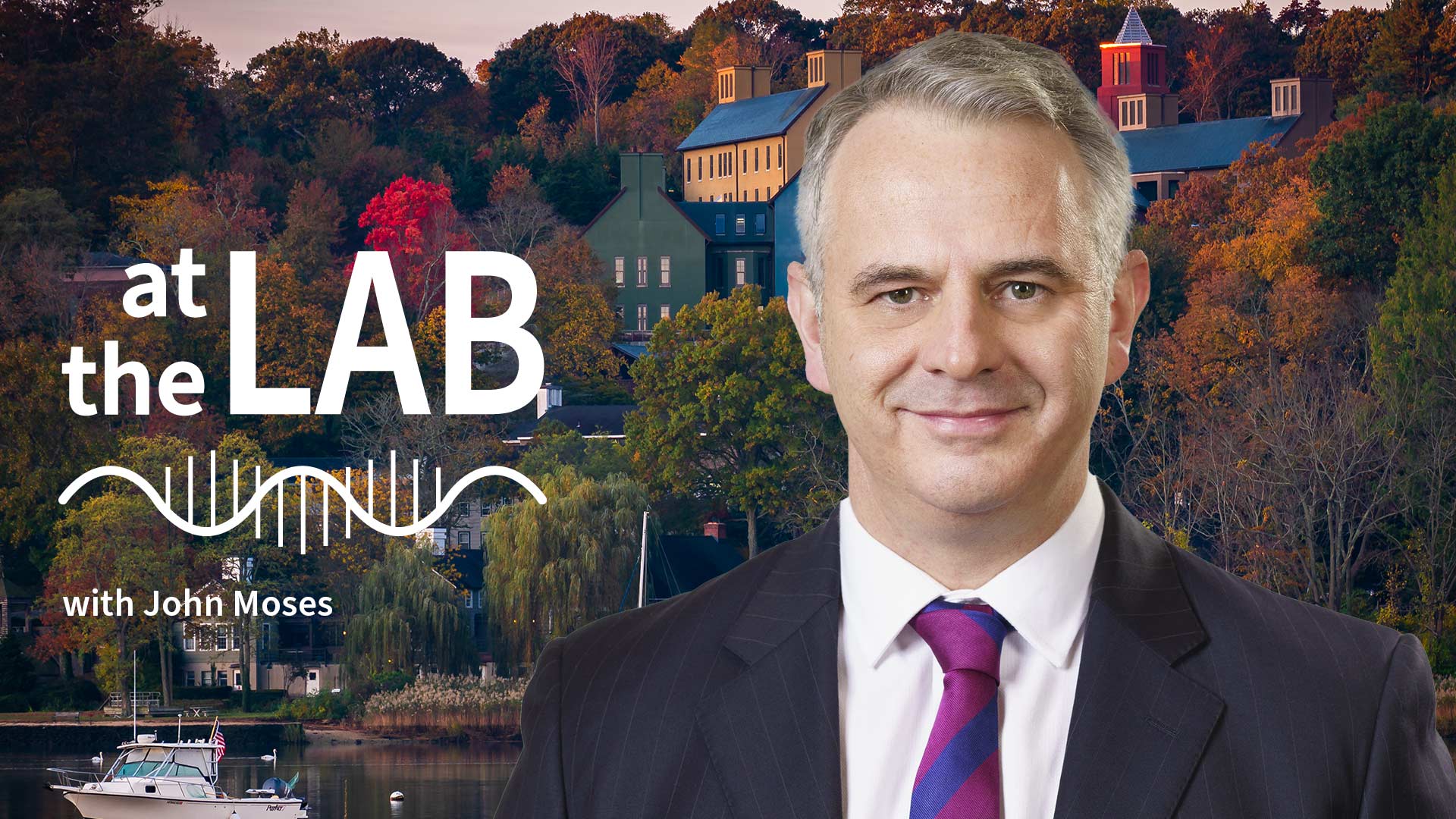Some of the world’s most precious chemicals are biological in nature. But what can we do when nature offers only a limited supply? This week’s podcast starts on the other side of the globe and ends up back here At the Lab with CSHL’s resident click chemist, Professor John Moses.
Read the related story: A new, sustainable source for a promising cancer killer
Transcript
Sam Diamond: You’re now At the Lab with Cold Spring Harbor Laboratory. My name is Sam Diamond. And this week At the Lab, “A more sustainable chemistry.”
SD: Actually, this week’s story begins elsewhere.
{Rainforest sounds}
SD: Deep in the jungles of Malaysia, there’s a plant called Tabernaemontana corymbosa. Don’t be surprised if you’ve never heard of it. The plant is so rare it’s on some endangered species lists.
SD: But that’s not the only thing that makes it remarkable. It also produces a chemical called (–)-jerantinine A. You might not have heard of this either. But don’t be surprised if you do in the future. That’s because (–)-jerantinine A has been found to have anticancer properties. To find out more, we met with Cold Spring Harbor Laboratory Professor John Moses.
John Moses: Nature provided the blueprint. Nature provides many lifesaving molecules, but it doesn’t always provide them in large quantities. But we can now access (–)-jerantinine A from a commercially viable source, which is very inexpensive, and make this precious material.
SD: Moses is a chemist who specializes in something called click chemistry. This set of reactions enables chemists to ‘click’ together two or more molecules, forming new compounds quickly and reliably. The technique was pioneered by Moses’ mentor, Nobel laureate K. Barry Sharpless. And it’s click chemistry that empowered Moses to synthesize (–)-jerantinine A at the lab.
SD: From there, he worked with Cold Spring Harbor biologists to test the synthetic on different diseases, including pancreatic cancer and breast cancer.
JM: From my lab at Cold Spring Harbor, this is the first proper chemical biology study—chemistry for biology. They brought the chemist in to help cross the bridge between chemistry and biology and eventually develop therapeutics and investigate biological pathways. This shows you exactly the power. It shows you the strength of collaboration and communication internally. The fact that I’m there on the ground and we’re swapping ideas—it really is an effective way to make advances.
SD: More work will need to be done before (–)-jerantinine A is ready for clinical trials. However, initial preclinical results look promising. And beyond that, Moses’ work here demonstrates the value of using click chemistry for drug discovery.
SD: Thanks to his team’s efforts, we don’t have to travel across the world or mess with endangered species to get our hands on this rare chemical. Instead, we can make it safely and sustainably right here … At the Lab.
SD: Thanks again for listening. If you like what you heard this week, you can subscribe wherever you get your podcasts. You can also find more stories like this at cshl.edu. For Cold Spring Harbor Laboratory, I’m Sam Diamond. And I’ll see you next time At the Lab.
